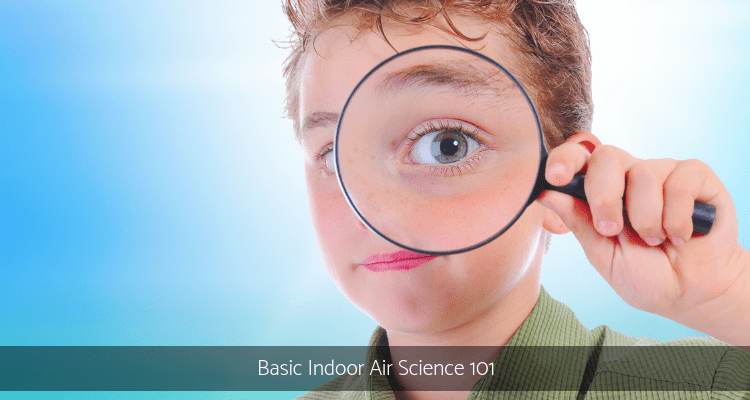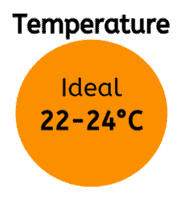There are 2 basic elements to Quality Indoor Air science: air balance and air hygiene.
1. Air Balance
Your indoor air is delicate, and in order to reach perfect indoor harmony, it must be balanced.
Balancing your indoor air means keeping the temperature of the air between 22⁰C and 24⁰C which is the degree of just right for humans, animals and the indoor environment.
Temperature varies among places and individuals. However, no place or person always has exactly the same temperature at every moment of the day.
Note: This is a cool overview (excuse the pun) that I created. For this fun exercise I handpicked articles that told a story*, by choice in place of scientific references and research, giving you a peek into lives of indoor inhabitants around the world.
The Temperature Scale
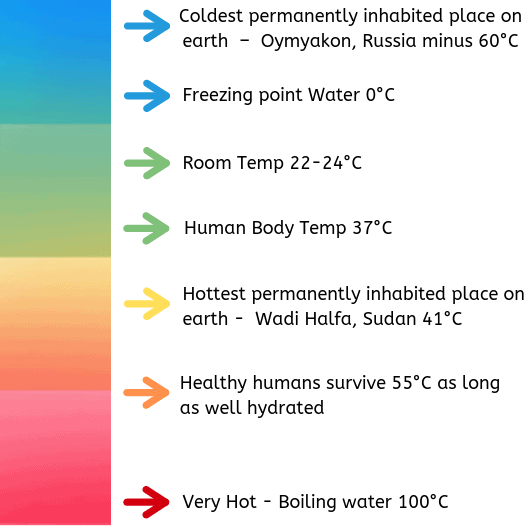
There are 4 main ingredients to keeping this indoor air balanced: temperature, air flow, ventilation and relative humidity.
Recommended Range: 22 to 24° Celcius
Temperature alone is unstable. Building characteristics, materials, furnishings, occupancy levels, ambient and radiant heat, relative humidity, air movement and just about anything that enters the indoor air can affect the temperature. When temperature is low, it means your air is cold, and when it’s high, your air is hot.
To give you an idea of how temperature works, our bodies feel comfortable when air temperature is neutral. If we encountered a low temperature, we’d shiver to prevent hypothermia. And if the temperature was high, we’d sweat to prevent hypothermia and heat stress.
The perceived temperature inside will also depend on the outside temperature, so that if it is 35° C outside and 22° C inside, this may seem excessively cold when a person enters the building, however, in winter 22° C may seem warm.
That is the reason a cardigan or hoodie comes in handy because this temperature reading can change frequently.
The opposite of cooling is heating. Chances are you’ll use less of the heaters but it’s still a good idea to keep on hand to help radiantly heat and warm the air indoors.
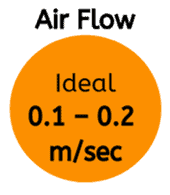 Recommended Rate: 0.1 metre per second
Recommended Rate: 0.1 metre per second
Air flow is a temperature buffer, discouraging moisture damage and energy losses, and ensures occupant comfort and health. Air movement across the building enclosure is driven by either wind pressures, stack effect, and or mechanical air handling equipment like fans and furnaces.
It’s also a good idea to keep a mechanical air flow supply of breeze in the space since this rate can fluctuate.
Just like temperature, when air flow is neutral, our bodies feel comfortable. If we encounter more air flow, we’d cool down and notice it is ‘drafty’. And if the air flow was nominal, we’d heat up, sweat and notice it is ‘stuffy’, oppressive and start to stress.
Inside, the perceived air flow will also depend on the outside wind speed outside. So that if it is windy outside, and the building is ‘leaky’ with air gaps and cracks inside, this may seem cold when a person enters the building. However, may seem comfortable in an air tight building.
Similar to temperature, a cardigan or hoodie comes in handy because this interior can change dramatically.
No air flow, chances are you’ll use more mechanical systems if there are no ways of openings, doors and windows.

Advocated by ASHRAE 62: 10 litres per person per hour for office buildings
Ventilation moves outdoor air into a building or a room, air flow, a process of introducing fresh air, changing and replacing indoor air with ambient outdoor air. Air is moved unintentionally as infiltration through gaps and through opened windows and doors, or intentionally by mechanical systems.
Having ventilation in your indoor air controls the environment with air flow, helps displace the indoor air contaminants from drastically increasing inside the building. Simultaneously, ventilation dilutes, replaces, removes stale air and creates acceptable indoor air quality.
Natural ventilation is the use of temperature and wind, due to air density differences, to drive air flows in and through windows, doors and gaps. Building design, stack ventilation, temperature-induced or wind ventilation and human behaviour provide a very high air-change rate at low cost.
Wind speed and direction, in conjunction with size of openings, creates air flow. In summer, the indoor-outdoor temperature difference is not high enough to drive ventilation, and wind is used to supply as much fresh air as possible. Whilst in winter, the indoor air is much warmer than outdoors, providing for stack ventilation.
 Without ventilation, the amount of contaminants in the air intensifies, your air will become polluted and gross and affect you by making you feel unwell. Makes you cough, itchy, sore eyes, blocked nose, headache, tiredness, dizziness and allergies. And to your building? Contaminants stick to your floors, walls and ceilings, furnishings, and sink into carpets or anything and everything brought into the space may be a direct trigger themselves.
Without ventilation, the amount of contaminants in the air intensifies, your air will become polluted and gross and affect you by making you feel unwell. Makes you cough, itchy, sore eyes, blocked nose, headache, tiredness, dizziness and allergies. And to your building? Contaminants stick to your floors, walls and ceilings, furnishings, and sink into carpets or anything and everything brought into the space may be a direct trigger themselves.
When natural ventilation is not enough, mechanical ventilation system supplies the designed air flow rate. The air flow operates at a constant rate using a fan to force air through ducting, controls air temperature and humidity, uses a lot of energy and can be controlled in different spaces as needed.
The answer lies in the number of times the volume of air in a space is exchanged for one or two people per hour. This is known as air exchange rate or air changes per hour.
The higher the air exchange, the quicker the air quality returns to fresh. In a fresh environment you will gain well being and health very quickly. In a poor indoor air quality environment, you breathe the contaminants through your respiratory system and absorb through your skin and you would get those un-wellness symptoms back.

Recommended Range: 40 to 60%
While relative humidity is not really part of air balance, it’s still important to talk about. Without humidity, the amount of water vapour in the air, your air will become hungry for moisture and seek to fulfil it’s appetite by feasting on your building and even on you by dehydrating it, and anywhere else it can get water. Dries your skin, sinuses, throat, eyes.
And to your building? House plants dry out, wallpaper peeling at the edges, static electricity, a direct result of dry air. Having humidity in your air will help protect your body and building materials in the long run. However, too much humidity can cause dampness and other issues.
The answer lies in the evaporation rate.
The higher the temperature, the quicker the water evaporation rate. The higher the temperature, your body sweats to keep itself cool, you lose water. In a dry environment you will lose all your water very quickly. In a humid environment, water condenses on your skin and you would get that water back.
In contrast, the lower the temperature, the slower the evaporation rate. The cooler temperature does not prompt sweating, you maintain your water and in turn your comfort.
Note: Humid conditions are usually found in hot temperate climates or the summer season if localised or when the temperature indoors is warm with moisture and water damage issues. Keep an eye on it throughout the year to make sure it stays within range. If the humidity in your air is high, you will have to dehumidify the air by drying it to normal levels and returning it to comfortable indoor air
PRODUCT:
Buy a Dehumidifier
Round the clock protection when you need it most! Reduce mould, mildew, dampness, condensation, odours. Relieve hayfever, sinus headache, influenza, sneezing, itchy eyes, stuffy nose, coughing, allergic rhinitis, asthma symptoms any time of year!
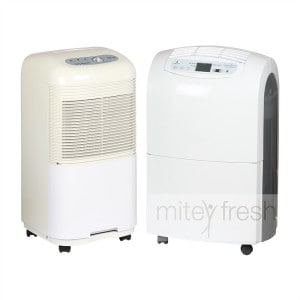
How To Keep Your Indoor Air Balanced
It’s important to keep your nose and senses on your carbon dioxide and particulate matter changes – at least daily until you’ve gained a sense on how your indoor air works – by using yourself as the tester.
 To keep your air balanced, you need to keep these elements in mind:
To keep your air balanced, you need to keep these elements in mind:
carbon dioxide – that is your exhaled air, you and other occupants, animals and plants breathing out
particulate matter – dust, pollen, soot, smoke, and liquid droplets
volatile organic compounds – VOCs intended use or unintentional emissions from different sources – cleaning and personal care products, furnishings, carpets, glues, paints, insulation
carbon monoxide – un-vented gas stoves, heaters, fire places, water and central heating boilers, attached garages, that is vehicles inside the garages
nitrogen dioxide – unvented combustion appliances, gas stoves and heaters, kerosene heaters, vented appliances with defective installations, tobacco smoke
ozone – office equipment, certain photocopiers and laser printers
You’ll notice I didn’t mention air purification. Most people don’t need it. If your carbon dioxide and particulate matter are good, this will do. You may need to add an air purifier if the ventilation doesn’t reach all the rooms efficiently – like adjusting your mobile to get good reception.
The presence of indoor air adverse health effects can be determined in some spaces by unusual odours, visual inspection and your innate sense something is not right. Others may be detected through routine testing or be noticed only when there are complaints of health problems in the home, office or school setting.
However, if you know the trigger, the source to contaminant elements VOCs, particulate matter, carbon monoxide, nitrogen dioxide, ozone, remove it, replace it, fix it and review occupant habits.
If your temperature is high, ventilation will lower it. Yes, this will lower contaminant elements even further. If just your air flow is low, and your temperature is getting higher, you can use mechanical air handling equipment like fans. This situation can be tricky to correct, and it may take several tries to get both levels to normal, so make adjustments gradually to acclimatise.
If your air is properly balanced at all times, it will make your life a whole lot easier.
2. Air Hygiene
The most common form of air hygiene or cleanliness is opening windows and doors, but there are other options you can use:
- Eliminate or simply removal
- Substitute or simply replacement
- Engineer or simply devise
- Administer or, you guessed it, simply manage habits
Removal
Elimination of source material is commonly used when people react or are extremely sensitive, it puts a stop to that contaminant’s odour or that emission of gases or biologically contaminated material.
Its also recommended for buildings or spaces owned by other people, where you as the occupant is a tenant. Removal requires permission, owner may not consider removing or are oblivious to it as they are not suffering.
Removing building materials works that little bit differently than replacing the offending contaminant trigger. These types of materials are damaged. Water, particles, gases or fumes deteriorate the material, but if damaged, it drastically speeds up the contamination process. We will talk about materials later.
Replacement
This is an alternative to removal. It’s an effective method for indoor air quality and even makes the air not only smell fresher, it feels and tastes fresher.
Substitute with safer, non-toxic alternatives, are part of a total non-chemical package and should not be mixed with standard materials. You must stick with the non-fragranced laden products offered by ethical companies, including personal care and cleaning and laundry products.
These non-chemical, non-aromatic, ethical packages are slightly more expensive than traditional toxic liquids and powders at the cashier. Yet, are they over time? In my opinion you may wish to consider tallying up the cost of all products replaced, and your health, and of course the health you gain is priceless
PRODUCT:
Naturally Home Starter Kit
Get back to basics and DIY! All the ingredients you need to make your own SAFE and EFFECTIVE cleaning products. The good old basics that our grandmothers used to clean with!

Devise
Contaminant free (mostly) and fresh air are introduced to the indoors by manually opening windows, engineering the windows to operate automatically open, or to provide fresh air supply physically either by a Heating, Ventilation Air Conditioning (HVAC) system or an Air Purifier. These latter two systems work to ventilate the air, but they are much faster than opening windows.
An HVAC or an air purifier is not a complete air quality alternative as relative humidity is still to be considered – but only act as a support.
Habits
Cleaning your indoor air is another term for administering freshness to your space.
When a dust particle captures a mould spore, pet hair or other organic materials such as fumes in your air, it is considered as a load of dust. This just floats around in your indoor air until it can be captured and removed.
In order to “capture” dust, you must “shock” the air by ventilating enough fresh air – or mechanically shock including HVAC or Air Purifier – to reach break point clean.
I personally recommend ventilate your home at least every day. Ventilate! Ventilate! Ventilate!
PRODUCT:
Cornwall’s Fermented White Vinegar
I always recommend a pure fermented white vinegar like Cornwell’s. It is Australian made and very effective for keeping mould from growing in your home.
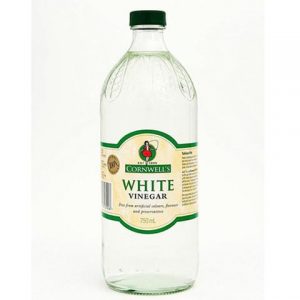
Proper Fermented White Vinegar solution: 4 parts to 1 part water plus a couple of drops of dishwashing liquid
Fermented white Vinegar is an extremely effective bacteria and algae killer, and cost effective.
There are a few ways you can introduce fermented white vinegar into the space, including:
- Spray on surfaces evenly
- Soak chux wipes, wring extra moisture out, cover surface for 20 mins
Chux wipes are the most popular form. They come in single and multiple packs and can be added to cleaning hard surfaces in the kitchen, the bathroom, or in your bedroom.
Note: When buying vinegar make sure you look for Cornwell’s White and Fermented as active ingredients. This type of vinegar is natural and made in Australia. Synthetic may just be as good, but it’s nicer to have the real white vinegar. We will talk more about vinegar later.
Indoor Air Shock
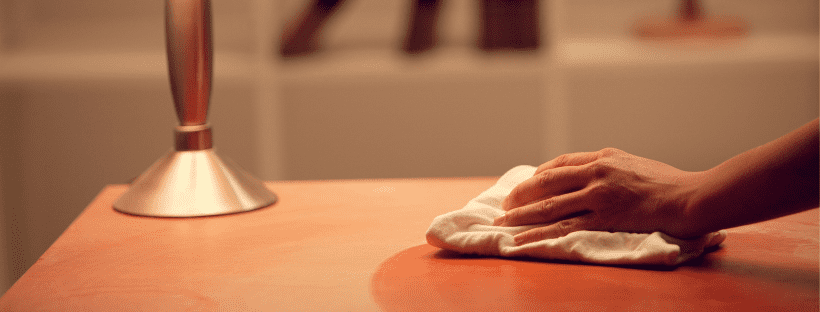
Shocking your indoor air space whether your bedroom or office is another term for adding a ton of fresh, decontaminated air to your space.
When a pollutant such as mould or pollen spores, microbial contamination, animal dander, dust mite, asbestos or metal particulates, combustion gases, smoke or gas, or other organic material is in your air, it is regarded as combined dust. This just floats around in your air until it settles and can be captured and removed.
In order to capture, you must “shock” the air by adding enough ‘filters’ – and manual dusting using micro fibre cloths is a central key to reach cleanliness.
Note: Indoor air shock systems provide fresh air either manually by opening windows or mechanically utilizing air purifiers and HVACs. They will operate, do their job, and disperse contaminants very fast. That’s why it’s important to shock your air during morning or day, and let it work for 8 hours (with the mechanical system running) throughout the day.
Open your windows and doors every day. You may wish to consider an air purifier to shock your room at least once a week
PRODUCT:
Air Purifier
E20 PLUS includes an additional final stage 6kg carbon filter for applications requiring heavy duty chemical & odour removal. Excellent for removing pollution from main roads, smoke and mycotoxins produced by mould spores.
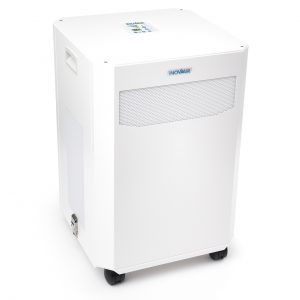
What is Quality Indoor Air?
To reach quality, the air indoors must be clean enough not to represent a risk to human health or to animals, plants or assets over a period of time.
Your indoor air exposure levels have two durations: immediate health effects and long-term health effects. Immediate effects refers to health effects which may show up shortly after a single exposure or repeated exposure to a pollutant. Long-term effects refers to other health effects which may show up either years after exposure occurred or only after or repeated periods of exposure
HOW TO
How to Shock a Space
Want to learn how to shock indoors? check out this post and videos and follow along with these easy steps to successfully shock your indoor air quality.
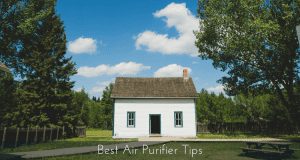
Other Types of Indoor Air Considerations You Need To Know About
‘A hidden connection is stronger than an obvious one’. – Heraclitus of Ephesus
If you only used temperature, air flow, ventilation and relative humidity, you could keep a clean and fresh room all year long. However, there are a few more criteria you should be familiar with in case you need or decide to consider them.
Air Toxins
Most materials and associated human habits you add to the air will contain some form of pollutants present at very low concentrations, and many are known or yet to be discovered to cause or suspected of causing long-term health effects in humans, plant or animal life.
However, if you start with fresh air, you might want to add non-toxic (aka natural) materials as a safe base so that the off gassing doesn’t contaminant the indoor air so quickly. This will protect your health from breathing in or absorbing through your skin.
Considered to have very adverse effects on indoor occupants’ health, these contaminants are all predominantly found where people spend up to 90% of their time, inhaling these contaminants almost continually.
There’s been not much research on air quality indoors. If you are concerned, precaution is the ultimate word, and if you don’t catch yourself doing this in time, there is always later today to start and keep the toxins and chemicals at bay until you can get the quality indoor air back up
If you’re currently having a mould problem in your place, bleach is not your best option. Thankfully, we have a solution to help you get rid of mould and keep it from coming back in the following article
HOW TO:
How To Get Rid of Indoor Mould
Are you having guests coming over and now your indoors smell musty? Or are you the kind of person who constantly has black spots all on the walls no matter what you do? Does it seem like there is no way to get rid of the mould in your home?
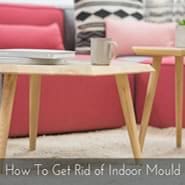
As far as using a dehumidifier goes, you’ll also need to make sure you clean it often, at least once every three days using hydrogen peroxide to remove any film or mineral deposits. The water in the reservoir should be changed daily, and be sure the area around it (tabletops, windows, carpeting, curtains, etc.) are kept dry. If you have a central air heating system, the best dehumidifier is one that is built directly over your system and connected into a humidistat and water removal hose so the entire process is automated and your home is evenly comfortable.
New and Renovated Buildings
A new building or renovating a space contributes to bringing all those tiny particulates and VOC pollutants that are making your air contaminated and combining them into more dust particles and off gassing that you can have a least favourable chance of managing. Does renovating do this? Get rid of that dust?
When you stop to consider it, you begin to realise how true this is. New and renovated buildings create more dust and off gassing to really take note and do something about it
Information:
Household Dust is Toxic
When you stop to consider it, you begin to realise how true this is. New and renovated buildings create more dust and off gassing to really take note and do something about it.
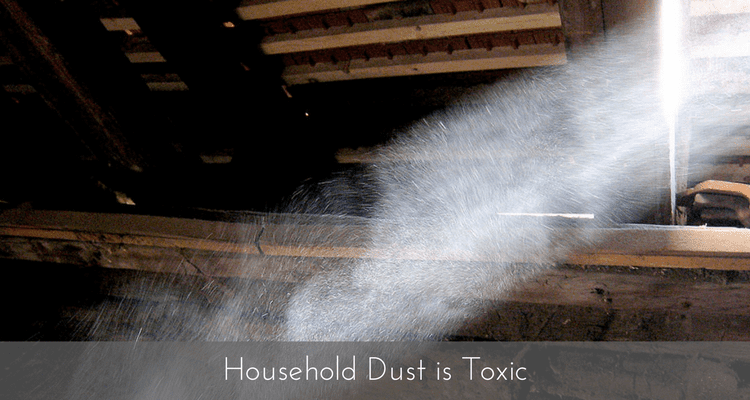
New or renovated buildings, occupants complain excessively, brings in new material off gassing, and stinks out the space. With renovation dust, you will have to manually get those particles out of your air by vacuuming with a HEPA filter and power head or crank up the air purifier to turbo and shock the space.
HOW TO
How to Fix Contaminated Indoor Air
Got contaminated indoor air? We’ll teach you a few methods on how to clear your contaminated indoor air as quickly as possible.

Heavy Metal Removers
If you have heavy metals such as lead and copper, asbestos, radon (yes, some locations in Australia and located more so in USA) in your air, you should engage a certified professional to assess and remove those elements away from the building and property so that occupants can be safe.
If these elements come out of their source that keep them intact, they can attach themselves to the walls and other parts of your building, in your soil or drinking water, inhaled or ingested and create a risk to your health
HOW TO
How to Identify and Remove Indoor Heavy Metals
To address this problem, the source of indoor metals, asbestos, radon air contaminants must be identified, and the appropriate solution introduced as soon as possible.
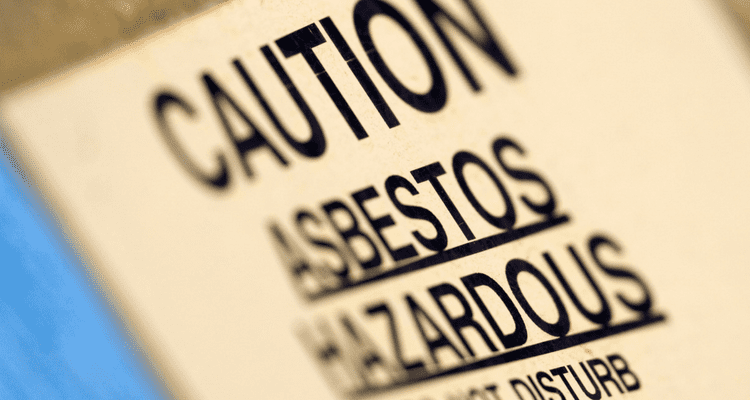
To Recap
To maintain safe and healthy indoor air, you need to keep your air maintenance at the following levels:
Temperature: 22⁰ to 24⁰C
Air Flow: 0.1 metre per second
Ventilation: 10 litres per person per hour for office buildings
Relative Humidity: 40 to 60%
Make sure to practice good air circulation and filtering, and keep your indoors cleaned by vacuuming using a power head and HEPA filter and clean frequently.
My 3 Cs of indoor air care include: cleaning, circulation and chemicals. I suggest you read these posts to understand how to keep your quality indoor air clean and healthy all year long:
The Importance of Indoor Air Circulation
I added The Nature of Indoor Air because you should know what you’re working with before you get started.
Towards healthier living Carol Parr ♥
Our passion comes from pure necessity that we can all live natural and healthy lives, we can all contribute to human wellbeing and preservation and determine the future health of our children and their environment tomorrow.
As a result of working with us, women and their families thrive, work places and their personnel prosper, mouldy / chemical / electrical sensitive occupants heal. They’re healthier, they’re alert, they’re happier, more relaxed, more productive, and enjoying life.
Together we bring about healthy indoor environments and create rooms that provide calmness, healthy sleep, relaxation and restored energy for you and your family, create workplaces that provide ideal personnel attendance and elevated productivity.
By returning indoor spaces to more natural conditions, we strengthen you and your family and your personnel’s mind, body and spirit. It’s nice that it also sustains our planet’s ecology, you’d agree.
*Story Telling References:
I chose story telling references by choice in place of scientific references and research as they provide an insight into the inhabitants lives from around the world for this fun exercise.
http://allthatsinteresting.com/worlds-coldest-city
http://allthatsinteresting.com/hottest-place-on-earth
https://www.theguardian.com/cities/2015/jul/22/where-world-hottest-city-kuwait-karachi-ahvaz
https://www.theactivetimes.com/content/16-hottest-places-earth/slide-7
https://www.livescience.com/30580-9-hottest-places-earth.html
Helpful Reference Links:
Building Science Corporation. (2007). BSD-014: Air Flow Control in Buildings. [online] Available at: https://www.buildingscience.com/documents/digests/bsd-014-air-flow-control-in-buildings [Accessed 8 Mar. 2017].
Environment.gov.au. (2001). Air toxics and indoor air quality in Australia – State of knowledge report: Air toxics overview. [online] Available at: http://www.environment.gov.au/archive/atmosphere/airquality/publications/sok/chapter1.html#1-4http://www.environment.gov.au/archive/atmosphere/airquality/publications/sok/chapter1.html#1-4 [Accessed 8 Mar. 2017].
Author
-
We’re glad you’re here. We’re Carol and Tony, founders of one of the longest running Healthy Home Blogs in the world, Mitey Fresh Australia. We’ve been on this journey for the last 25 years and are passionate about helping families sift through health hazards and triggers like allergens, mould, water damage, chemicals and EMFs, to get clarity about what’s toxic and what’s not so they can create a healthy and happy home for their family they love. Each month, people visit this blog seeking focus on the health and wellbeing of their loved ones, sustainable and effective practice tips and guides, to help create and manage healthier indoor spaces, improve the built environment that is pleasing to the senses and support healthy living and nature, every day. Starting this blog was to help change people’s lives, one family at a time, and we can’t wait to share how its allowed us to stand next to you and show you how interpreting these synergies between buildings and the environment they are built in will impact upon the health and well-being of those who occupy them. Find out more about Healthy Homes and what this blog can do for you!
View all posts

